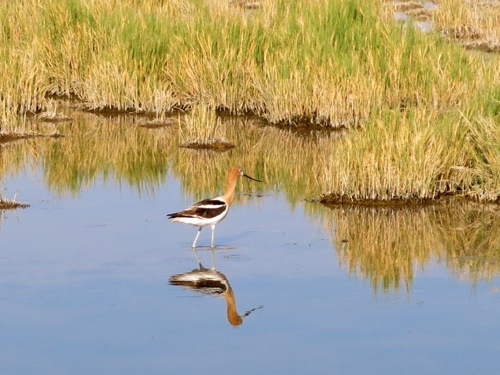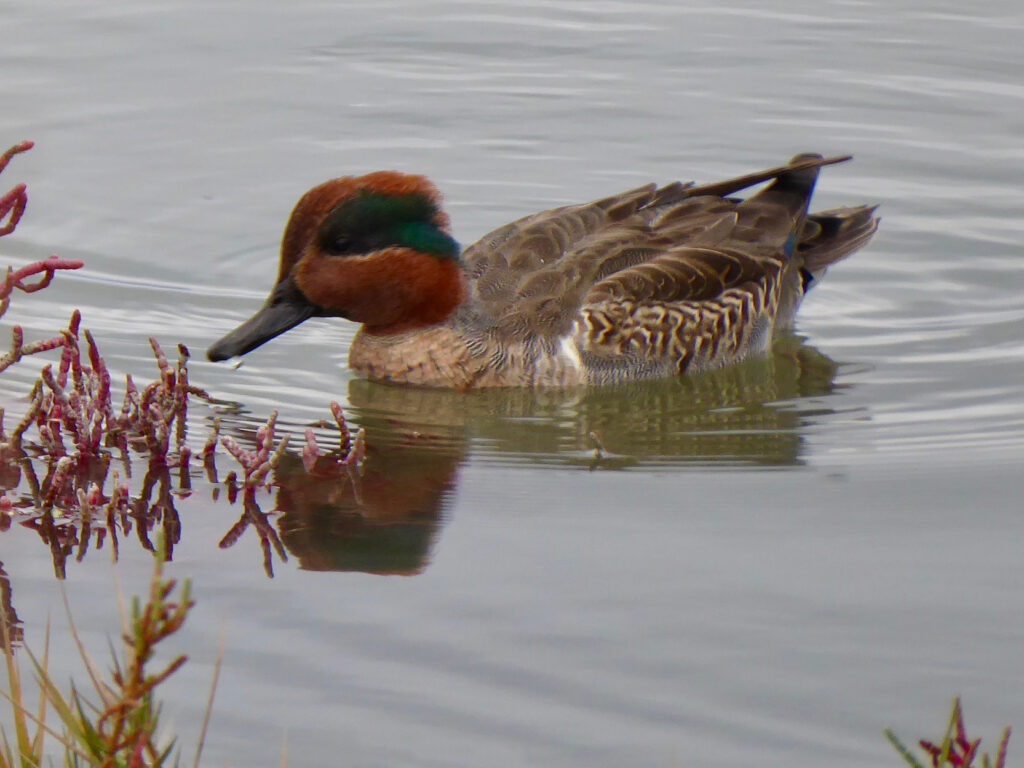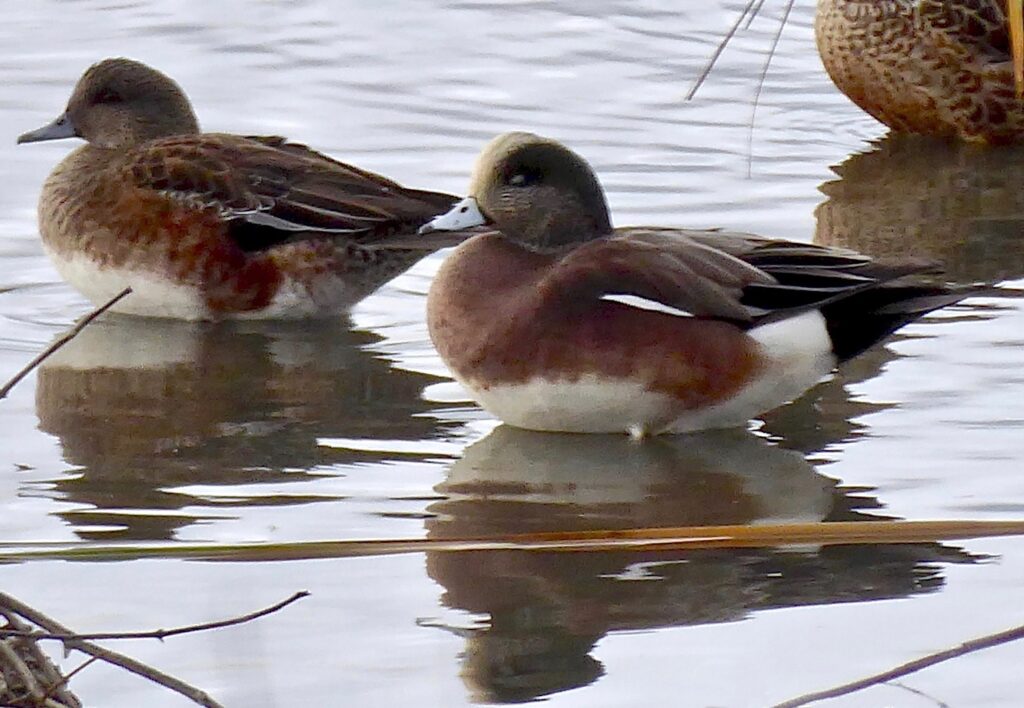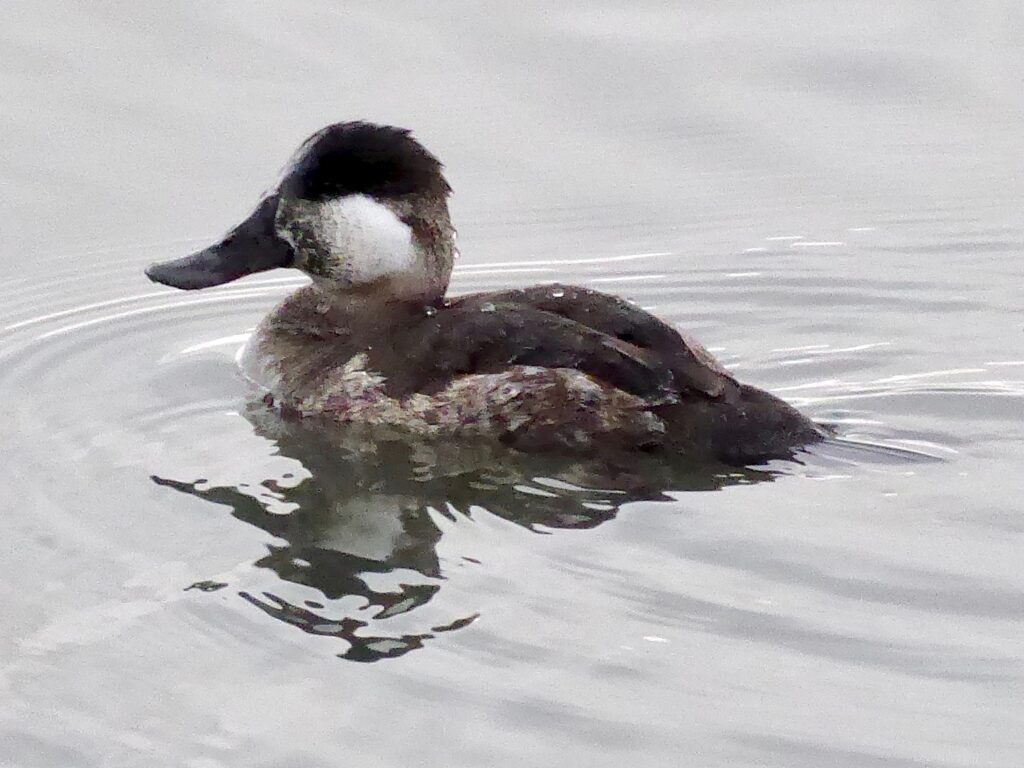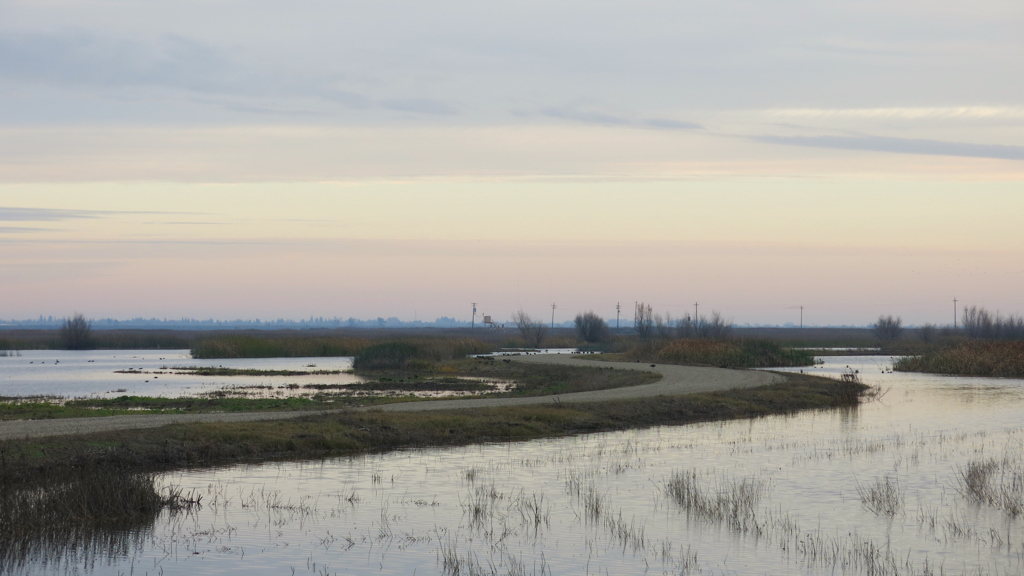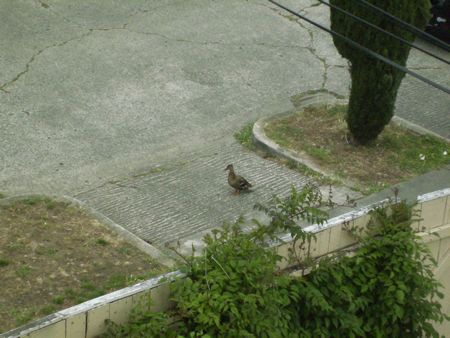This morning, I had a hard time getting on the road; a week’s worth of twelve-hour days running Ecojustice Camp finally caught up with me. I was a little bleary when I started driving. Yesterday in a truck stop I had found an audiobook, on CDs no less, of Isaac Asimov’s I, Robot, and I put the first disc into the car’s CD player. When I was in high school, I had loved I, Robot; I found I still liked it, even though there were huge holes in the plot, even though Asimov doesn’t appear to like women very much, even though he mixes slide rules and space ships; I liked it even though the characters were caricatures, but they were engaging caricatures.
At some point after I passed through Battle Mountain, I began to notice how green the mountains looked — green by northeastern Nevada standards, that is. It had obviously rained in the recent past. Then I began to notice the banks of yellow flowers along the edges of the interstate; I could not only see them, but in a few places I could feel the pollen in the air. They ere so stunning in that desert landscape that I finally pulled over at the exit ramp to Welcome, Nevada, and photographed them. They looked bright and dramatic against the freshly green sage brush.
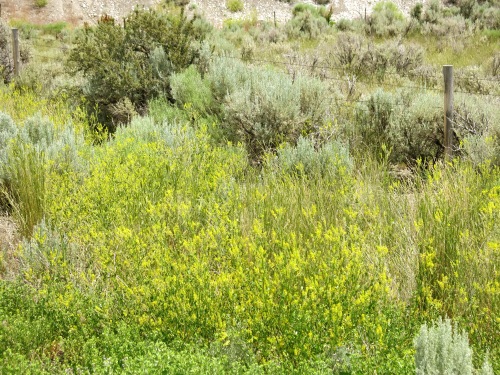
I rolled through dreary little West Wendover, Nevada, its faintly shabby casinos looking even more shabby in that huge landscape, with towering mountains, and the white expanse of the salt flats stretching eastward into the haze. I rolled across the salt flats — stopping briefly to eat a sandwich in the shade of the rest area in the middle of the salt flats — across the plains and hills on the other side, and got off at the Dugway exit. The directions said to head north, take an immediate left, go a third of a mile, then take the right fork. But the road didn’t fork, it terminated in the exit gate of a huge Cargill salt facility, with a railroad siding and towering piles of salt. Finally I figured out that what I was supposed to do was to turn right at the gates to the Cargill plant, and sure enough there I was at the entrance to Timpe Spring Wildlife Management Area.
One moment I was between the railroad siding and the salt plant, and the next moment I was driving along a narrow dirt road looking out at American Avocets and Black-necked Stilts squawking at me, and California Gulls soaring purposefully overhead towards Antelope Island, which loomed out of the invisible Great Salt Lake in the distance, and a Northern Shoveler dabbling at the edge of the marsh with that absurdly long bill it has.
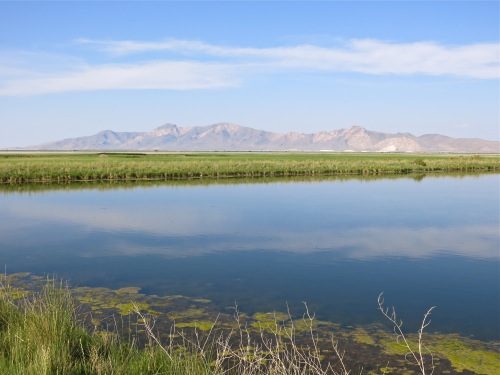
I started walking out across one of the dikes, but Forster’s Terns and Black-necked Stilts began circling closer and closer to me, and Song Sparrows came up out of the brush at the edge of the dike, all of them giving calls of alarm. Obviously, I was getting too close to their nests. So I walked out along the other dike, but soon an American Avocet and a Wilson’s Phalarope came out of the marsh grasses giving their calls of alarm, so I retreated once more. By that time, I had been walking around for most of an hour, and the temperature was one hundred degrees even, and I was longing for a drink of water. I walked back to the car.
The birds were not so bothered by me while I was in the car. I drove out very slowly, stopping several times to see if I could see the nests of the American Avocets and the Black-necked Stilts, but I could not; the nests must have been well down in the marsh grass. I swatted one last biting fly, slow and stupid from the heat, that had landed on my face, rolled up the window, and drove on to Evanston, Wyoming.
